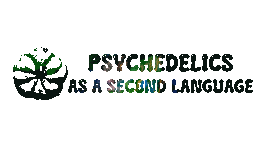Scanning our trips!
Psychonauts often worry about their brain, whether because of a bad experience. We might feel our brain becomes less responsive or that something doesn’t feel right post-trip, or we can have an underlying condition.
The current forms of brain scans are limiting and expensive as fMRI (costing around 538,00 US$ to 720,00 US) has a temporal resolution on the order of seconds to minutes, making it less effective for capturing rapid neural events, and PET scans (costing around $1159 to $7275) provides good spatial resolution, its temporal resolution is also limited plus the technique involves exposure to radioactive substances. Therefore, plenty of psychedelic interaction with the brain and their therapeutic effects remains quite a mystery. However, this might be about to change!
To understand how compounds like LSD, DMT, and psilocybin help in the treatment of certain mental illnesses and promote neuronal growth in the brain’s prefrontal cortex, Christina Kim and David Olson from the University of California, Davis Center, alongside their teams, brought to light a novel tool, named CaST (Calcium activity Sensing Tool). CaST takes advantage of changes in intracellular calcium concentrations (which serve nearly as a universal indicator of neuronal activity). When neurons are highly active, their calcium levels spike. This tool uses this spike as a signal to tag the neuron with biotin.

In this study, Kim and Olson used CaST to study the effect of psilocybin in mice. The tool tagged neurons in the prefrontal cortex, a region known to be affected by many brain disorders and also an area where psychedelics promote neuronal growth and strengthening.
Another positive note about this study was that the researchers could use CaST in a freely behaving animal, contrary to other cellular tagging technologies that require stabilizing the animal head to accomplish imaging, which can be difficult due to the head-twitch response in mice, a behavior correlated with the hallucinations caused by psychedelics.
The future goal is to extend the capabilities of CaST for brain-wide cellular and labeling and analyzing the protein signatures of neurons influenced by psychedelics so it can elucidate the cellular mechanisms underlying the therapeutic effects of psychedelics and compare them with non-hallucinogenic neurotherapeutics.
‘CaST will be an important tool for studying the mechanisms of action of these neurotherapeutic drugs.’ – Christina Kim.
Comparison to Existing Methods:
Traditional imaging techniques, such as fMRI and PET scans, offer insights into brain activity but have limitations in temporal resolution and cellular specificity:
Functional Magnetic Resonance Imaging (fMRI): fMRI measures blood oxygenation changes correlated with neural activity, providing indirect evidence of brain function. However, its temporal resolution is on the order of seconds to minutes, making it less effective for capturing rapid neural events (Springer Nature).
Positron Emission Tomography (PET): PET scans use radioactive tracers to visualize metabolic processes in the brain. While it provides good spatial resolution, its temporal resolution is limited, and the technique involves exposure to radioactive substances.
Two-Photon Microscopy: This technique offers high spatial and temporal resolution for observing live cellular activity but requires immobilization of the subject’s head, limiting its use in freely behaving animals.
Genetically Encoded Calcium Indicators (GECIs): Tools like GCaMP allow visualization of calcium dynamics in neurons with high temporal resolution. However, they typically require sophisticated imaging setups and can be challenging to implement across large brain regions.
Advantages of CaST:
Rapid Tagging: CaST completes cellular tagging within 10-30 minutes, much faster than the hours required by other methods.
Behavioral Relevance: CaST can be used in freely behaving animals, allowing naturalistic behaviors without immobilization.
High Specificity: CaST tags neurons based on intracellular calcium levels, directly correlating with neuronal activity.
Versatility: Biotin as a tagging substrate enables compatibility with existing commercial tools for detection and analysis.

